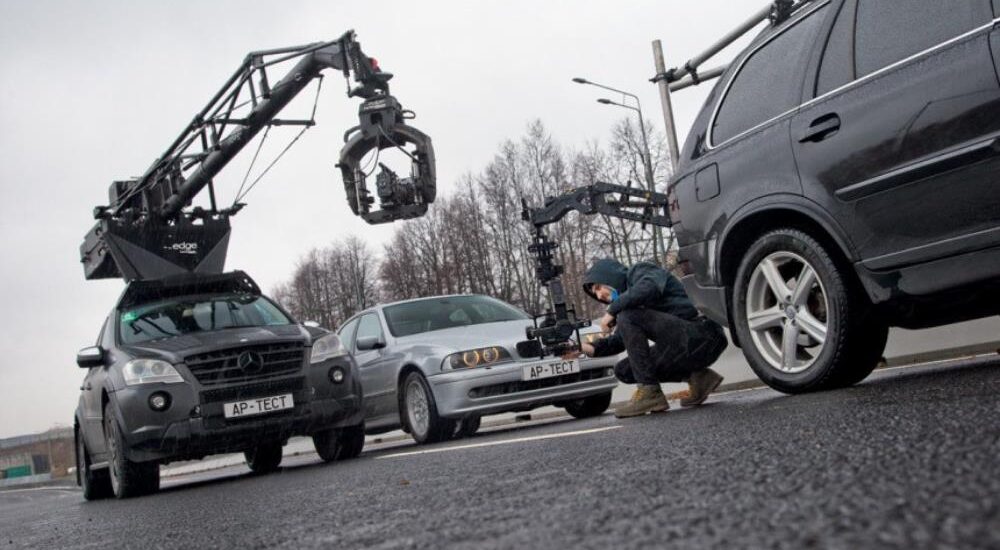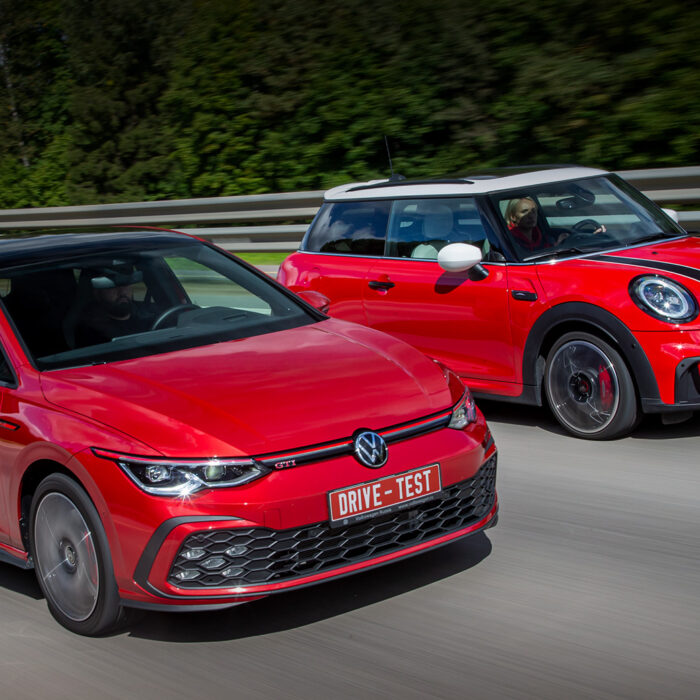У культовій телевізійній рекламі BMW автомобіль з реактивним двигуном мчить по висохлому солоному озері, розсікаючи повітря, піднімаючи хмари пилу та наближаючись до рекорду швидкості. Раптом пілот розкриває гальмівний парашут, машина зупиняється, і повітря наповнює звук відчинених дверей — на екрані з’являється людина в комбінезоні, яка дивиться прямо на нас, щоб перевірити об’єктив камери. Виявляється, вся гонка була знята «очима» седана BMW M5 із камерою, встановленою на його дверях.
Це класичний рекламний трюк, але він правдиво передає, що найінтригуючіші транспортні засоби у фільмах часто залишаються за кадром. Серед них є і ті, що розроблені в Росії.
Я зіткнувся з цією технологією за подібних обставин. Минулого літа я мав нагоду покататися на трековому прототипі Rossa — тому самому, який планує виготовити гонщик Роман Русинов. Він має десять циліндрів, 680 кінських сил і акр вуглецевого волокна. Проте автомобіль, який прибув, щоб зняти цю машину в дії, був ще грізнішим звіром.
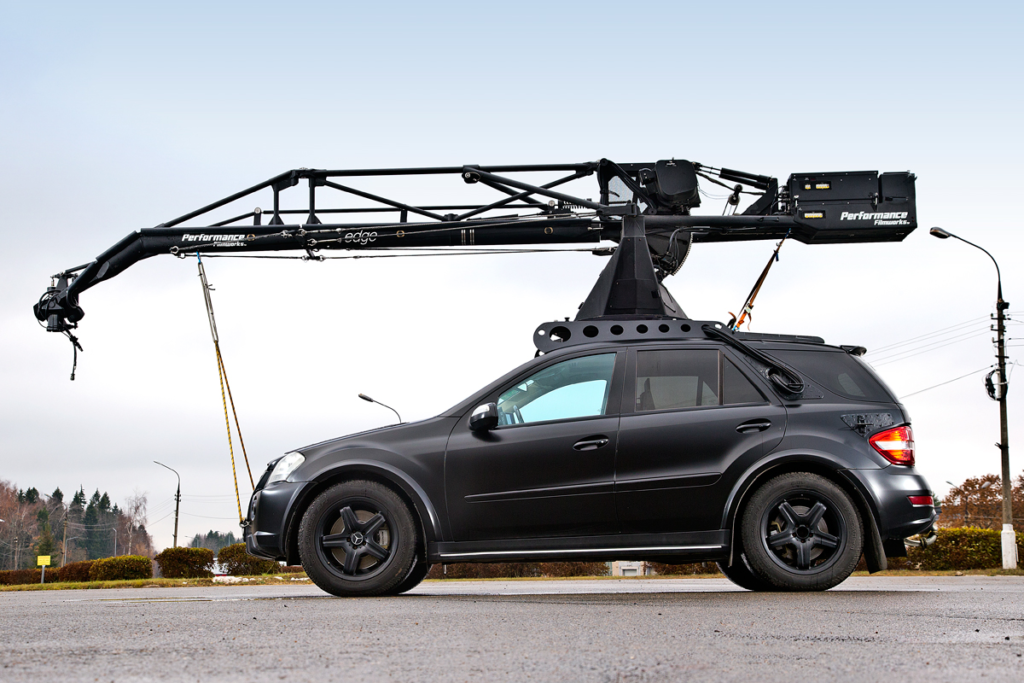
Більшу частину свого життя це був Mercedes-Benz ML 63 AMG 2010 року випуску серії W164, який проживав у родині московського стоматолога. Однак пару років тому він потрапив до рук режисерів і зазнав трансформації, гідної Божевільного Макса. Його кузов змінив металеву фарбу на матову плівку, щетинився дротами та кронштейнами, а з даху виростала вежа зі стрілою. Це російська армія. Хоча на обшивці написано «Performance Filmworks Edge Crane», у кіноіндустрії термін «російська рука» відноситься до всіх автомобільних кранів із камерою зі стабілізованою камерою, подібно до того, як «Xerox» став синонімом фотокопіювання.
«Російська рука» — король знімального майданчика. Його вартість конкурує з багатьма суперкарами, його комплектація коштує до мільйона доларів, а витрати на щоденну експлуатацію обчислюються сотнями тисяч рублів. Особливо вражає сцена перед початком зйомок: троє людей забираються в салон автомобіля, а ще двоє заходять в багажник, кожен з окремим завданням.
Мерседес запалює, наздоганяє автомобіль-герой і починає танцювати навколо нього. Вони зближуються, віддаляються, міняються місцями, іноді кидаються один до одного. Магія крана гарантує, що камера на кінці стріли утримує раму, зберігаючи своє положення незалежно від рухів Mercedes, який її несе. Навіть хитання, удари, прискорення чи відсутність асфальту не впливають на зйомку; кран може легко перетинати узбіччя, а положення камери залишається стабільним.
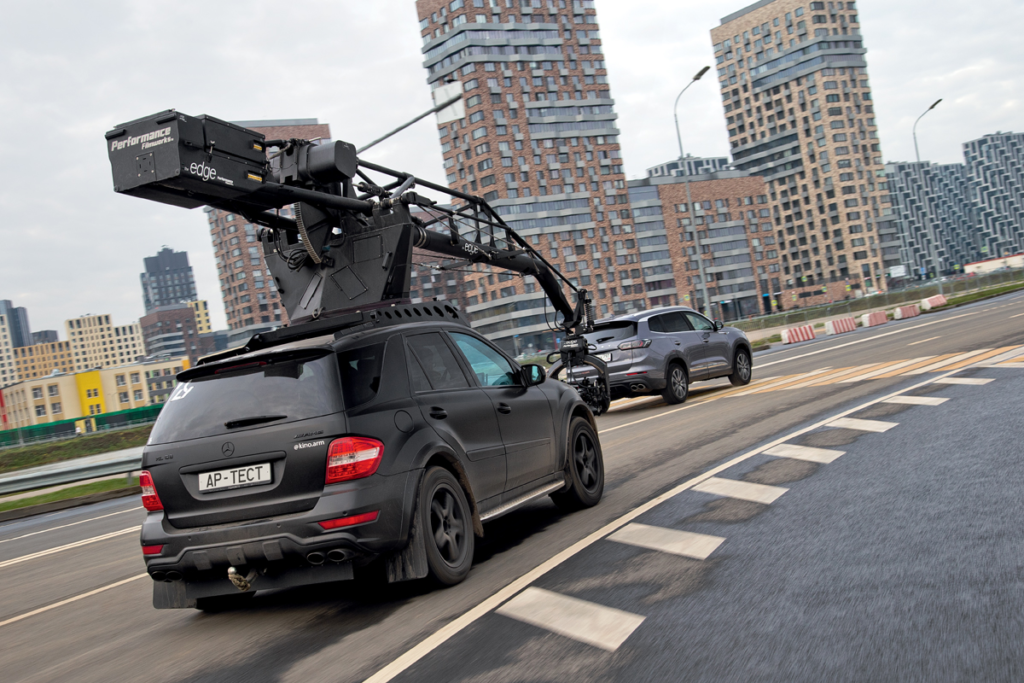
У той день виникла ідея переконати кранівника помінятися ролями, зробивши цей чудовий автомобіль головним героєм тесту.
Однак існують інші типи транспортних засобів оператора, не обов’язково оснащені вежею. Також на знімальних майданчиках успішно використовуються машини-камери зі стабілізованою підвіскою, наприклад, «стедікам». Вони набагато простіші та дешевші, але дають майже такий же ефект. Або можуть? Наприкінці минулого року я запросив на полігон як Edge Crane на базі Mercedes, так і більш скромний операторський Volvo XC90 V8.
Рука Тули
Форма слідує за функцією, але у випадку плівкового крана його функція визначає не лише його зовнішній вигляд, але й вибір марки, моделі та конфігурації транспортного засобу-носія. Пошук за запитом «російський стрілочний кран» здебільшого повертає зображення автомобілів на базі моделей Mercedes ML і Porsche Cayenne різних поколінь, часто навіть найпершого нерухомого рамного M-класу.
Для крана основними є міцний корпус, простора кабіна, міцна підвіска та потужний двигун. Точний контроль тяги та керованість також мають вирішальне значення. Ось чому старі версії AMG покоління W164 здаються майже спеціально створеними для цієї ролі. 2010 модельний рік став останнім для ML 63 AMG з атмосферним 6,2-літровим двигуном M156 V8 перед тим, як наступне покоління W166 перейшло на двигуни з турбонаддувом.
Цей Мерседес не зазнав жодних особливих модифікацій двигуна та трансмісії. Він проїхав 150 000 кілометрів «спокійно» без серйозних проблем — і так само легко проїхав ще 20 000 кілометрів після перепрофілювання. Однак, здається, жоден елемент кузова не залишився в первозданному вигляді.
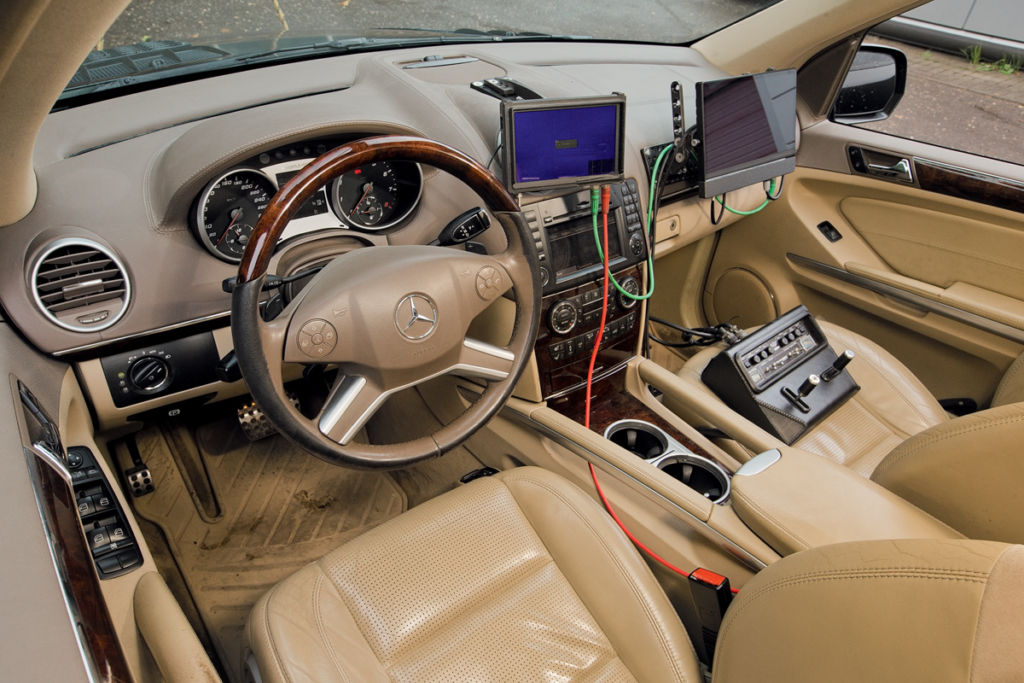
Правило перше: транспортний засіб з краном не повинен відбиватися в машині героя, відкидати на неї відблиски або тіні. Тому замість заводської фарби використовується матова плівка. З цієї ж причини зроблені перемикаються задні ліхтарі і стоп-сигнали.
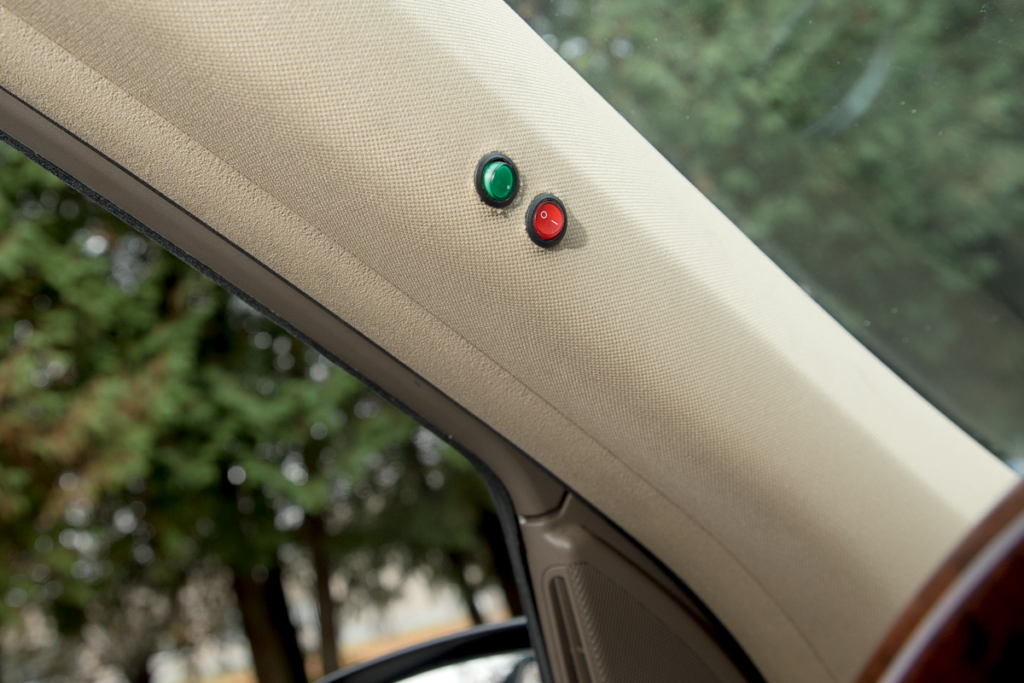
Правило друге: транспортний кран не повинен піднімати пил, кидати бруд, піднімати сніг або випускати вихлопні гази в раму. Тому, крім широких бризговиків під заднім бампером, встановлена суцільна спідниця «на всю довжину».
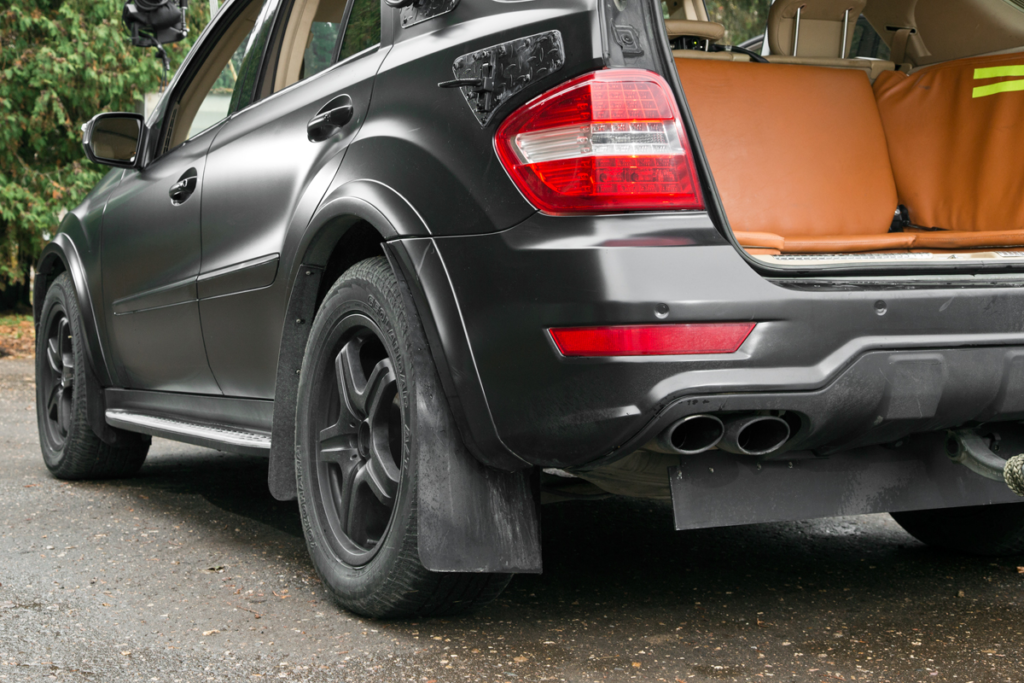
Третє правило: стріла і башта повинні бути легкодоступними. Так, капот посилений листами дюралюмінію для підтримки людини, що стоїть, а з боків кузова встановлені сходинки.
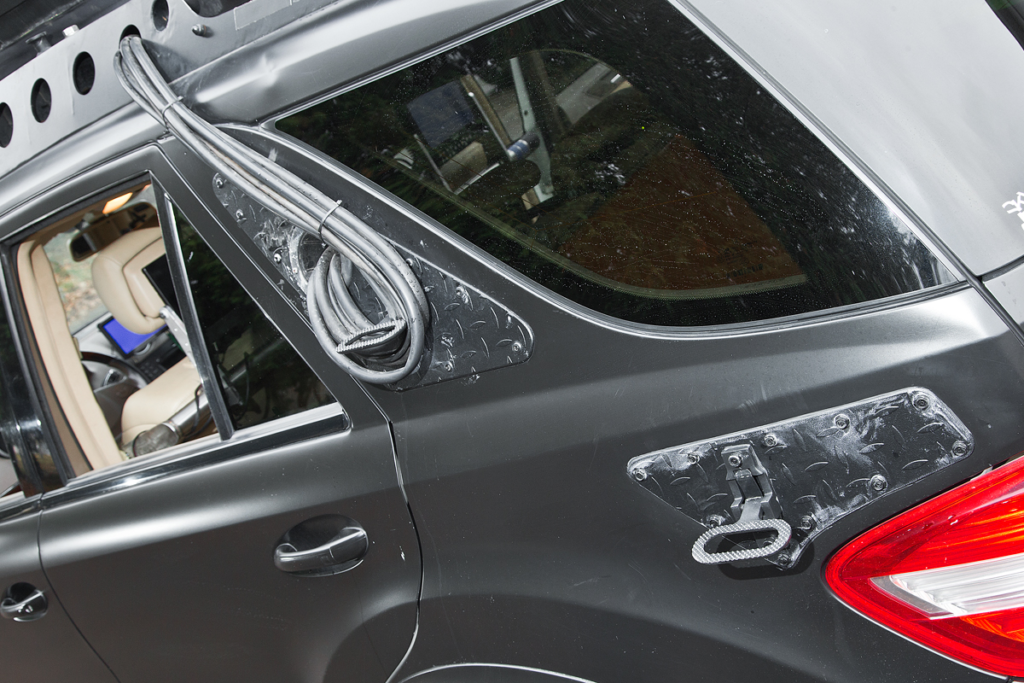
Правило четверте: кран повинен бути легким, міцним, розбірним і компактним. Для дальніх переїздів стріла і всі аксесуари повинні бути розібрані бригадою з трьох осіб за один день і упаковані в п’ять контейнерів. Складання також має тривати лише один день.
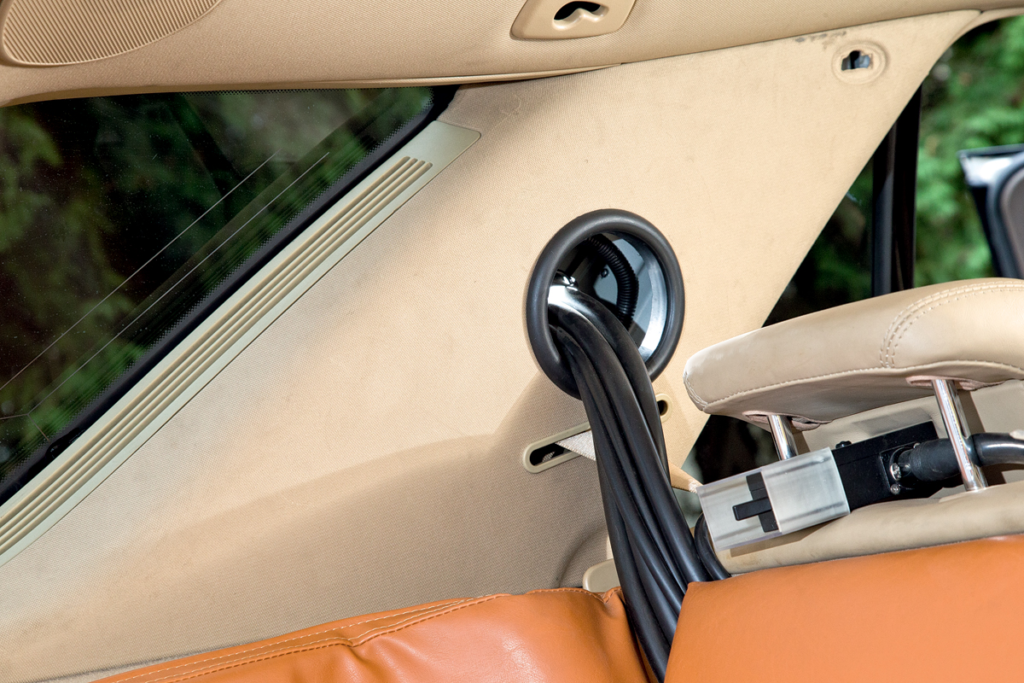
Правило п’яте: кран не повинен нести зайву вагу. Кожен кілограм на даху підвищує центр ваги, погіршує керованість і збільшує крен кузова. Тому акумулятори та блоки живлення встановлені в салоні за задньою лавкою, а численні сигнальні та силові кабелі проходять на дах через отвір у стійці кузова.
Правило шосте: немає часу заряджати батареї крана на знімальному майданчику, тому вони постійно підзаряджаються від стандартного автомобільного генератора через спеціальні блоки живлення, які перетворюють 12 В на 70 В, необхідні крану.
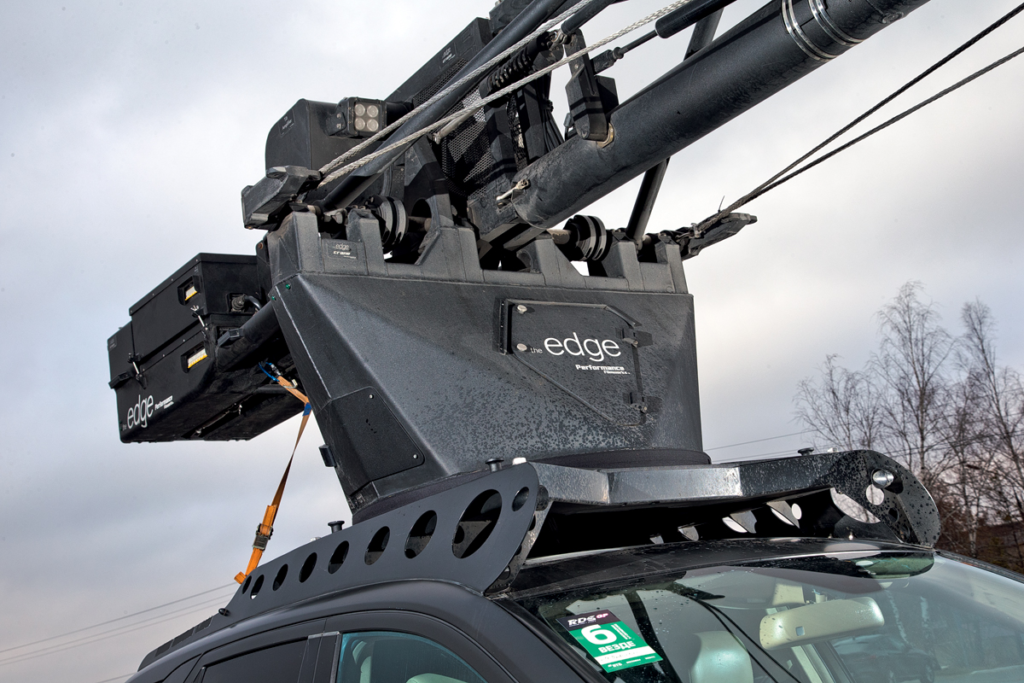
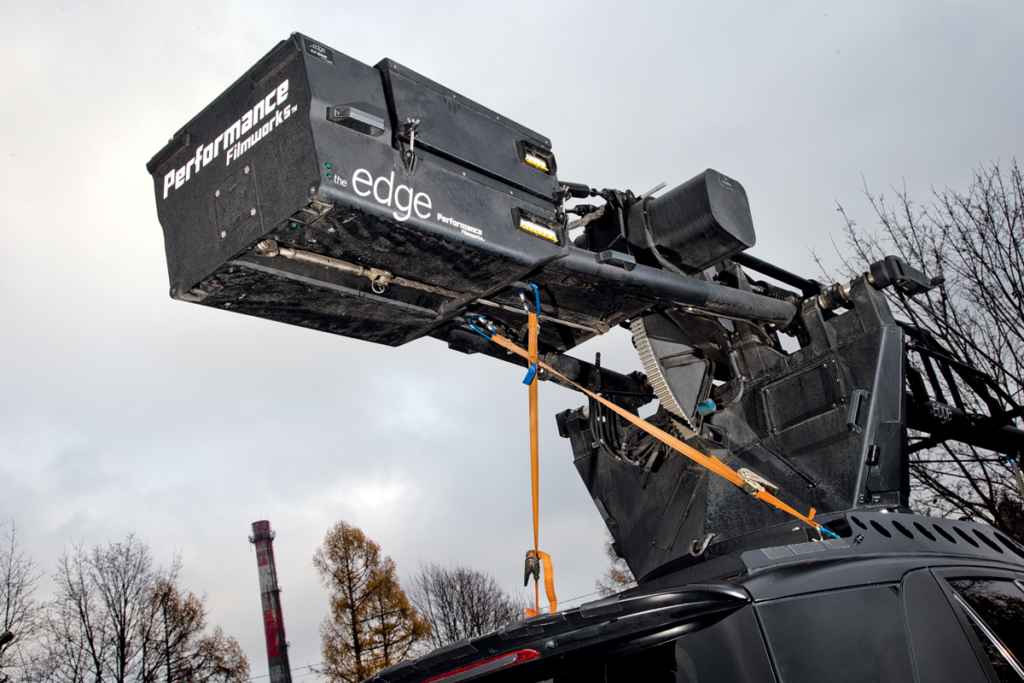
Правило сьоме: автомобіль з краном повинен мати великий багажник, з якого можуть працювати кранівник і знімач упору. Тому замість панелі підлоги і запасного колеса в зоні багажника встановлена П-подібна лавка.
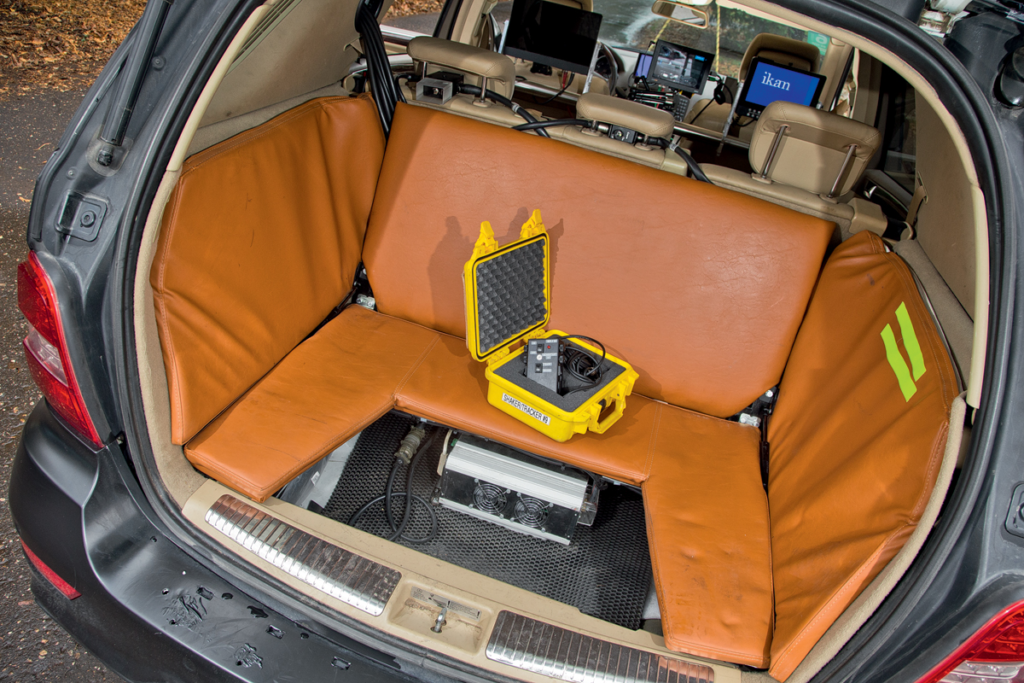
Загалом обладнання салону перевершило б будь-який китайський електромобіль: шість моніторів. Плюс два пульта з джойстиками. І це практично сама базова комплектація.
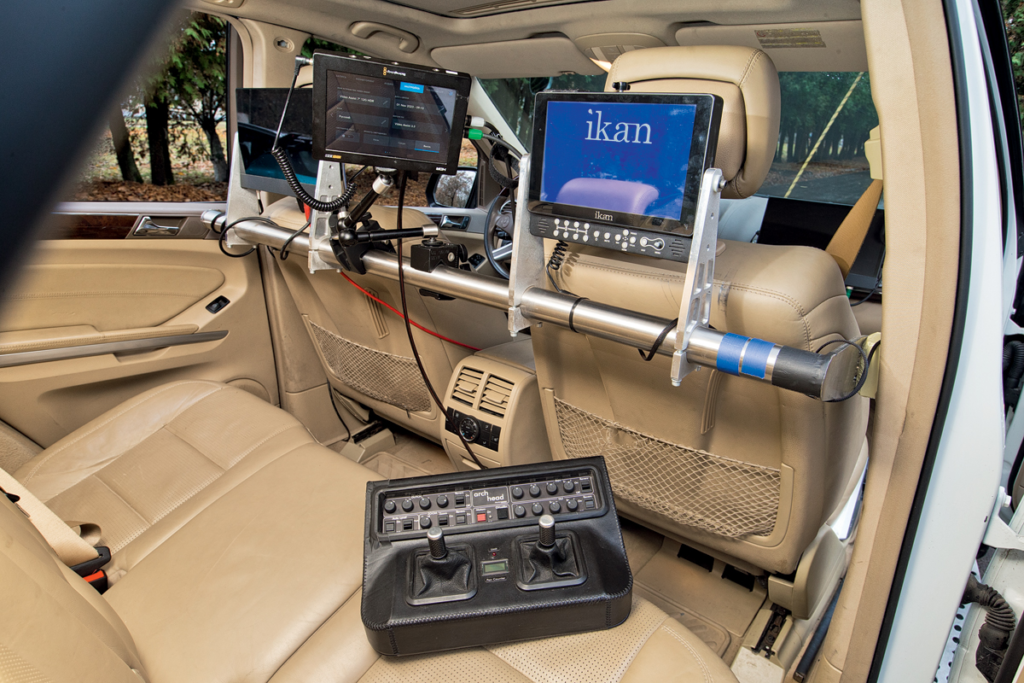
За водієм майже завжди сидить оператор, який керує камерою. Решта членів екіпажу можуть помінятися місцями. До складу бригади повинен входити кранівник, який керує вертикальним переміщенням стріли та обертанням по азимуту (за годинниковою стрілкою та проти годинникової стрілки), фокусник (помічник фокусника) та директор або помічник директора.
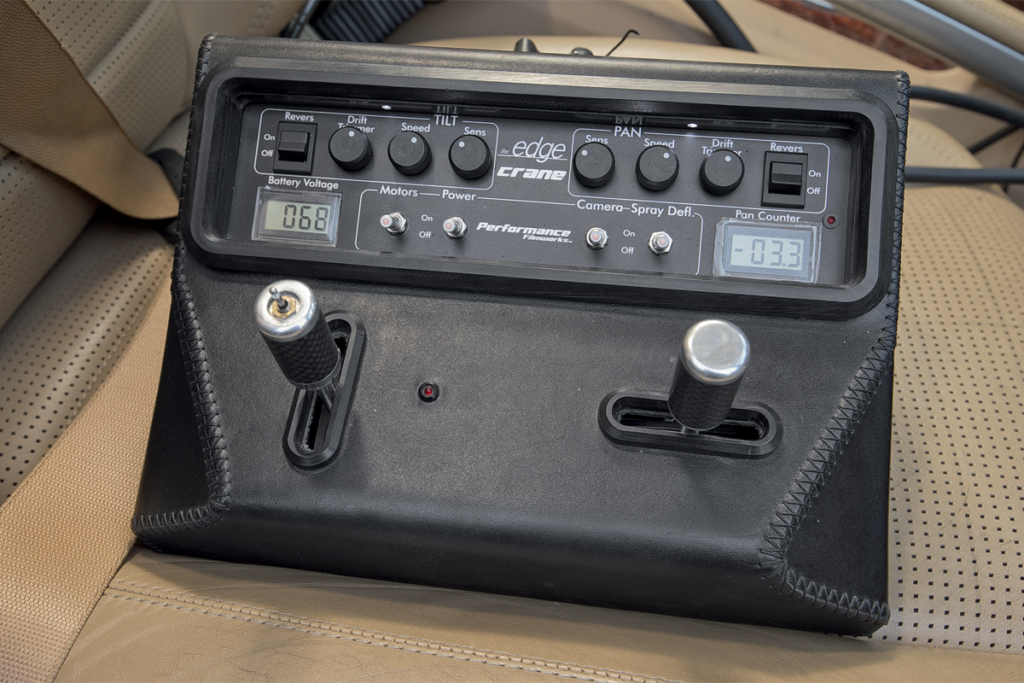
На стрілі написано «Edge Crane» — бренд каліфорнійської компанії Performance Filmworks, яка постачає плівкові крани для різних зйомок і займається розробкою, модернізацією та тестуванням такого обладнання та аксесуарів до нього. Однак насправді цей кран був побудований російською фірмою «Лєсков» із Тули, основним інженерно-виробничим партнером Performance Filmworks. Незважаючи на те, що російських компонентів небагато, окрім конструктивних елементів, основні принципи, що лежать в основі роботи крана, є вітчизняними.
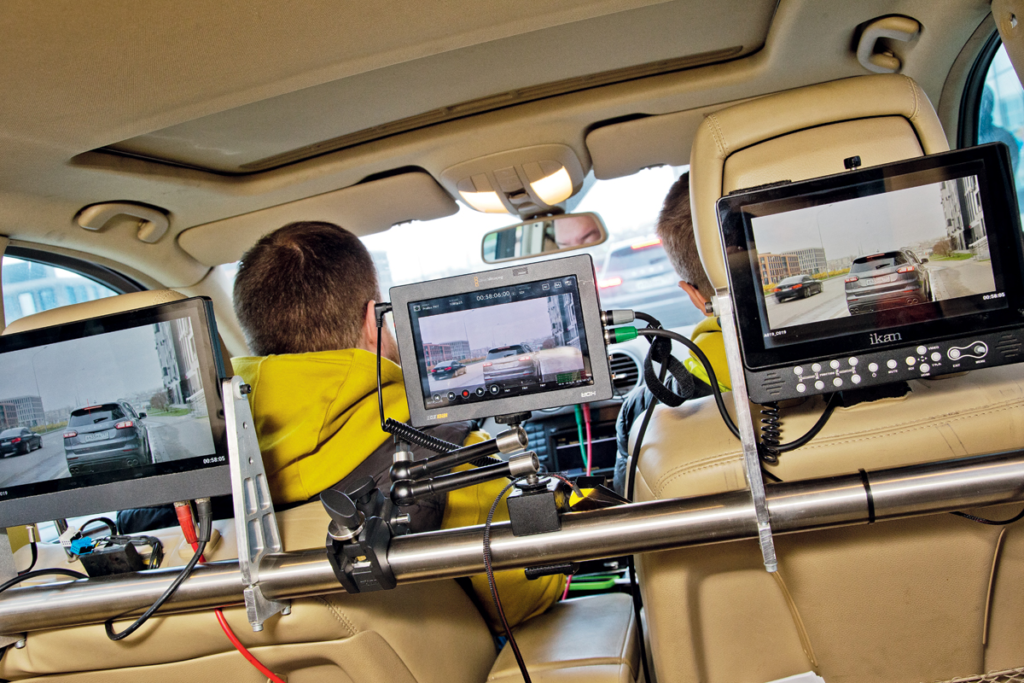
Історія феномену Russian Arm заслуговує на окремий розділ — шукайте його в історичному розділі. Поки що пам’ятайте, що цей кран працює на основі гіроскопічних індикаторних стабілізаторів. Теорію і практику їх застосування в кіноіндустрії розробили співробітники МГТУ імені Баумана. Все почалося в кінці 70-х на кафедрі гіроскопів і гіроскопічних систем на факультеті приладобудування.
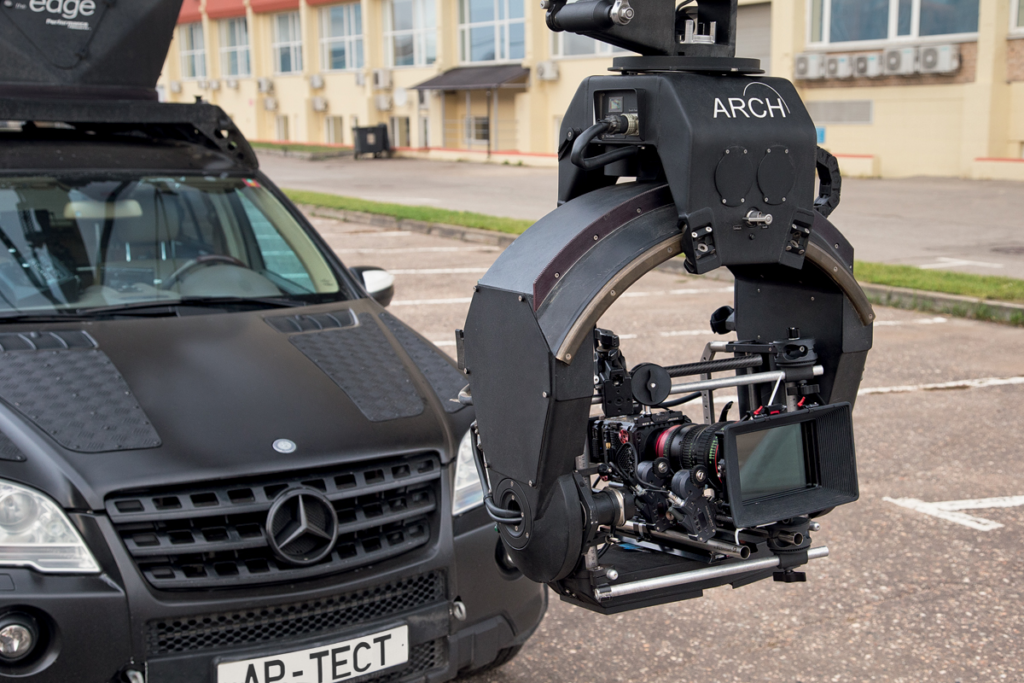
Наприкінці 90-х ця технологія отримала визнання в Голлівуді і до середини 2000-х років породила стільки аналогів, що термін Russian Arm став загальною назвою для будь-яких кранів-операторів з дистанційним керуванням, встановлених на даху автомобіля. Сьогодні ключовий розробник, колишній студент Баумана, живе в США і є головним інженером у Performance Filmworks. У Росії Лєсков займається проектуванням, виробництвом цих кранів, а іноді й модифікацією транспортних засобів.
Так що насправді всередині?
Щоб розібратися, почнемо з того, що таке гіростабілізатор. Це пристрій, який працює за принципом гіроскопа, тобто дзиги. Ротор, що обертається до дуже високих швидкостей, прагне зберегти свою початкову орієнтацію в просторі. Чим вище швидкість обертання, тим більше крутний момент повертає у вихідне положення. Якщо таку верхню частину помістити в раму з карданними підвісами вздовж усіх трьох осей, вона утворює карданну підвіску, де ротор має повну свободу зберігати свою початкову орієнтацію.
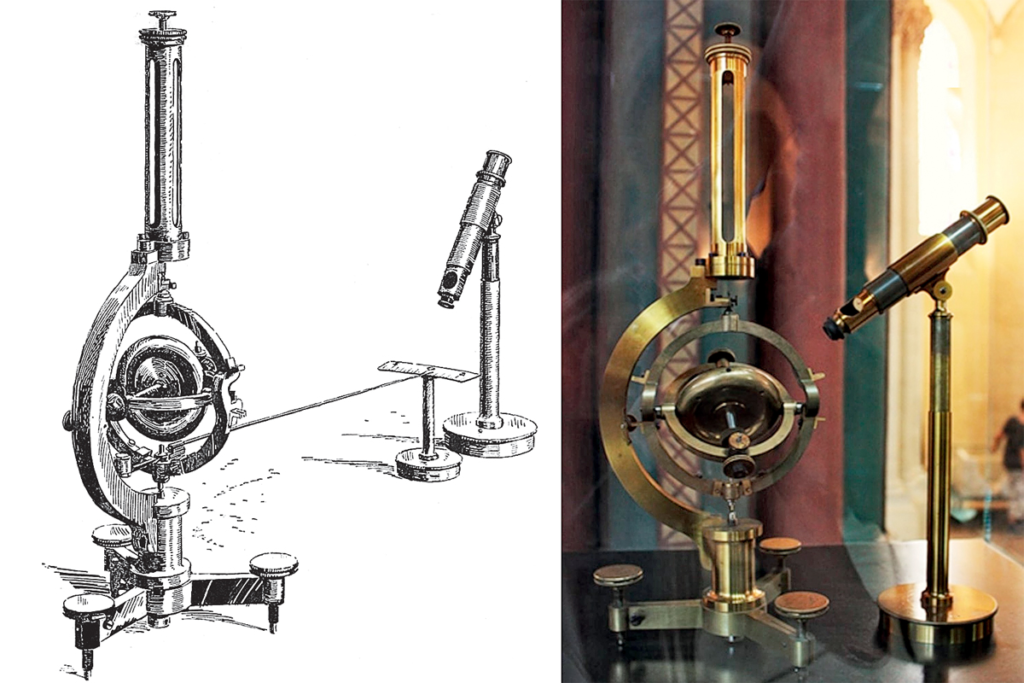
Якби стрілку прикріпити до внутрішньої рами гіроскопа, то вийшов би найпростіший пристрій, за допомогою якого французький фізик Жан Бернар Леон Фуко продемонстрував обертання Землі 172 роки тому. Пізніше ротор був з’єднаний через тяги з рульовим механізмом, створивши гіростабілізатор, який почали використовувати на торпедах в кінці 19 століття. У 20 столітті гіроскопи стали ключовим компонентом систем навігації та орієнтації для переважної більшості транспортних засобів, включаючи ракети.
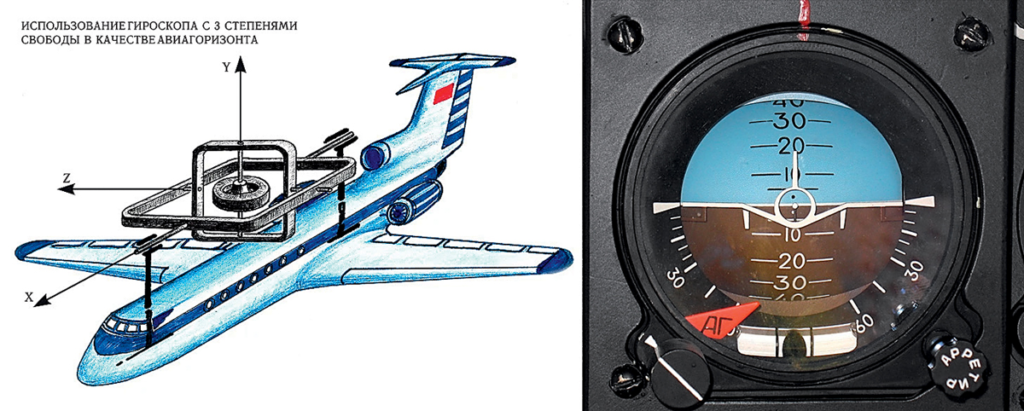
Однак гіроскопи з обертовими роторами важкі, великі, досить шумні і не завжди надійні. Їм потрібен привід, щоб підтримувати обертання на десятках тисяч обертів за хвилину, і час для обертання. Ось чому з середини 90-х волоконно-оптичні або вібраційні гіроскопи використовуються в стабілізаторах камер. Перші є електронними датчиками, які вимірюють кутову швидкість на основі різниці в часі, необхідної для проходження світлового імпульсу через волоконно-оптичну котушку. Останні роблять те ж саме на основі зміни напрямку своїх коливань. Вібраційні гіроскопи — це сучасні датчики кутової швидкості, які використовуються всюди, від ховербордів до смартфонів.
Вони також встановлені в стабілізаторах плівкового крана Edge. Крім них, є тахометри, кодери, акселерометри, датчики Холла, потенціометри, вузли вимірювальних модулів зі спеціальними алгоритмами обчислення та інші чутливі елементи. На основі сигналів від усіх датчиків будується контур зворотного зв’язку, що дозволяє спеціальним приводам компенсувати вібрації, розгойдування, крен, удари та інші шкідливі впливи.
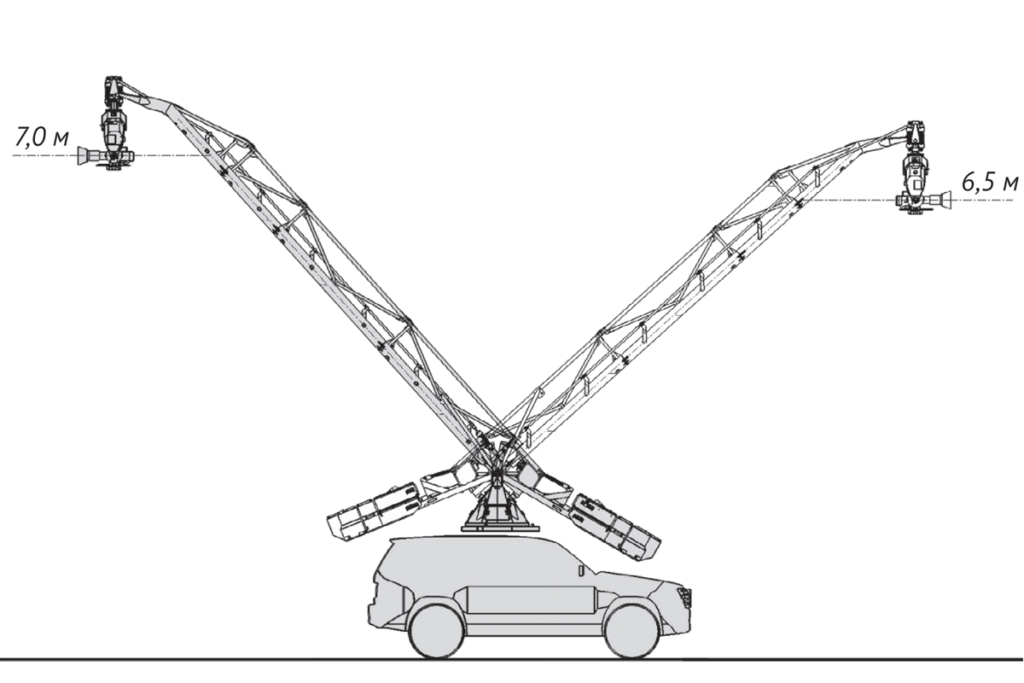
Сучасне електронне наповнення значно економить вагу, але все одно, коли ми поставили кран на ваги, він показав 2813 кг! На півтонни важче заводської спорядженої маси і впору з дозволеною сумою. Така додаткова маса не могла не позначитися на динаміці, тому найкращий результат розгону до 100 км/год виявився майже на дві секунди гіршим за заводський: 6,8 с замість 5,0 с. Але чи лише за секунди ми любимо старий атмосферний AMG?
Харизма двигуна зберігається при ньому на сто відсотків. Це двигун, який змушує вас посміхатися із задоволенням. З’єднання дросельної заслінки бездоганне, тяга приголомшлива, а звук незабутній. 6,2-літрова «вісімка» легко розкручується до 7000 об/хв, але у неї є ще важливіша якість: навіть звичайні поїздки на половині газу наповнюють радістю від взаємодії з справжнім великим двигуном.
Крім того, тут відмінно працює «автомат» 7G-Tronic. У цьому поколінні він уже вміє перемикати три передачі вниз, тож «Мерседес» може майже миттєво переключатися зі спокійної їзди на різке прискорення. Простіше кажучи, цей силовий агрегат вміє все.
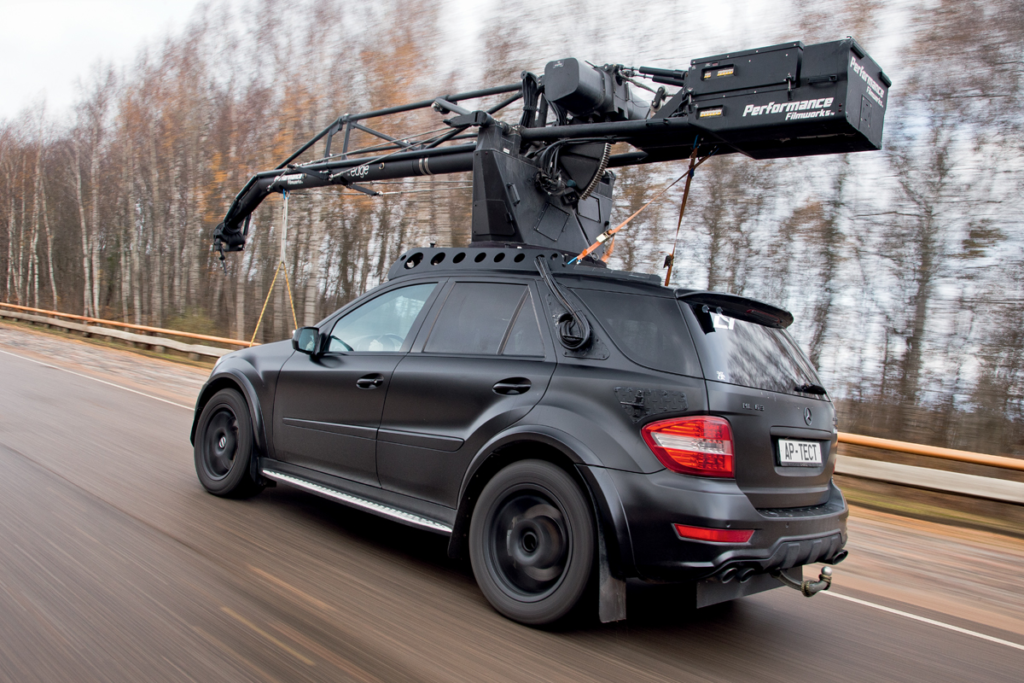
Це настільки добре, що я навіть почав згадувати, чи був якийсь великий семимісний Мерседес з таким мотором. І був R 63 AMG. Теж 510 кінських сил, той же «автомат», плюс сімейний салон. Я запам’ятаю цю думку.
Окрім двигуна, ML 63 AMG захоплює благородним відчуттям керма. Він досить довгий, трохи більше трьох повних обертів від замка до замка, але зовсім не ледачий. Без зайвої важкості та гостроти, але з багатим зворотним зв’язком і чітко окресленим центром. Відповіді швидкі та точні. Зразковий транспортний засіб. Але що було б, якби ми уявили, що знімаємо погоню і повинні були їхати рівно?
«Я не буду з цим робити перезйомки», — сказав Ярослав Циплянков, щойно побачивши кінокран. Справедливості заради слід зазначити, що аварійні маневри не були частиною програми випробувань з самого початку, тому що їх можна виконувати лише з увімкненою вежею, тобто майже повним складом екіпажу в кабіні та оператором стріли, який регулює її положення під час кожного маневру. Інакше станеться те, про що Ярослав одразу здогадався. А при вимкненій вежі не варто робити різких маневрів ще й тому, що є ризик пошкодити механізми.
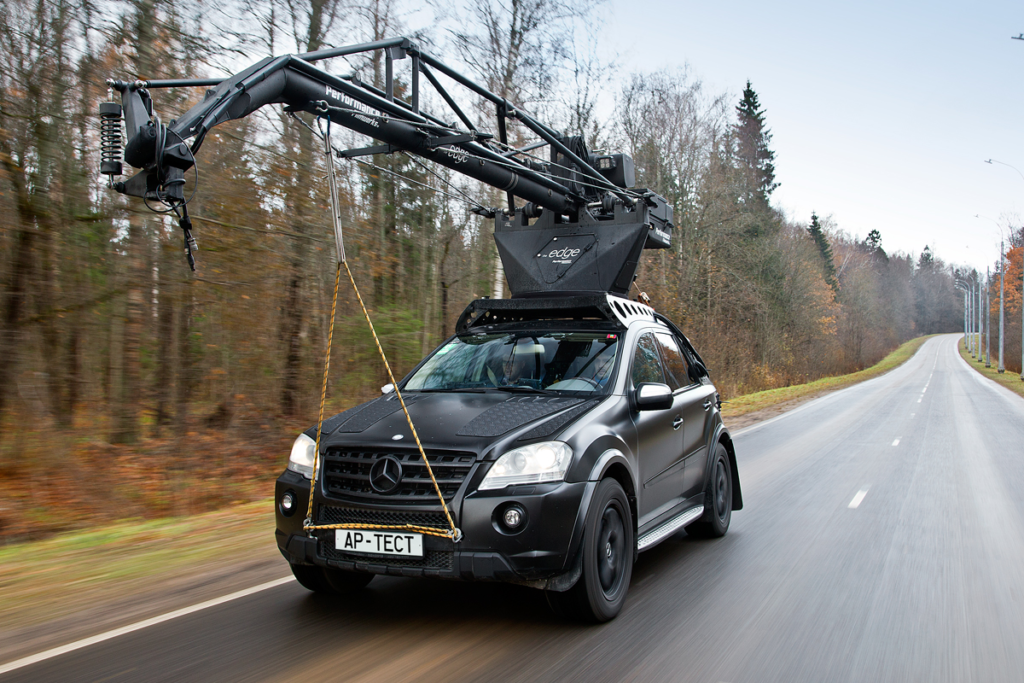
Однак відчувається, що на три з половиною тонни вище даху збільшився крен кузова і підвіска бореться з таким навантаженням. Пневматичні розпірки потрібні таким транспортним засобам, щоб кузов не прогинався під вагою крана, а тут подушки безпеки вже працюють на межі своїх можливостей. Незалежно від обраного режиму амортизації, Mercedes їде жорстко і пропускає нерівності навіть на більш товстих шинах 275/55 R20, ніж рекомендовано виробником. Однак очікувати іншого було складно, оскільки під час експлуатації «Мерседес» їздить у повному складі, додаючи зверху ще близько 400 кг. І не завжди процес пов’язаний з їздою по асфальту: підвіска AMG не була до цього готова.
Отже, у наступних планах на цей Мерседес — заміна подушок безпеки та встановлення ще більшої гуми 275/65 R18, щоб більше працювати на пересіченій місцевості. Плюс ще одне конкретне оновлення — перепрограмування ESP для обходу блокування водіння двома педалями. Це необхідно для ідеального контролю автомобіля під час зйомки на невеликій відстані, а стандартна настройка цього не дозволяє.
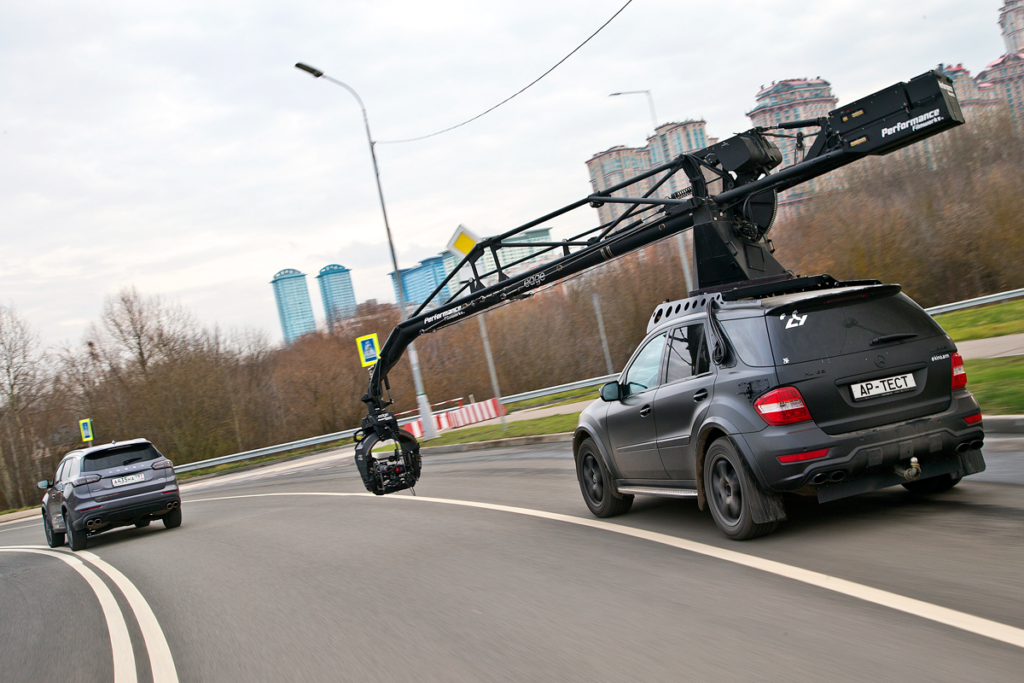
Через кілька днів після випробувань на треку я мав нагоду спостерігати цей кран у дії під час реальної зйомки. Технічне завдання було дуже простим — пересувати автомобіль звичайними вулицями під різними кутами, але процес зайняв майже півдня. Час йде на складання обладнання та перфекціоністське виконання кожного кадру. Одним словом, плівковий кран не спрощує роботу, а навіть навпаки. Але нагородою є якість картинки. Однак є альтернативи.
Щоб перевірити це, я позичив на один день машину свого друга-оператора, з яким ми регулярно працюємо на різних зйомках. Це був Volvo XC90 V8 2006 року випуску з індивідуальним маніпулятором.
Шведський хвіст
Початкові вимоги до автомобіля були дуже схожі: великий, просторий кросовер з потужним двигуном. Однак концепція знімального обладнання тут кардинально інша. Між рейлінгами даху і буксирною петлею міцно закріплена потужна вертикальна балка. Так само жорстко до нього кріпиться механічний пантограф-підвіска. Зовні він більше нагадує «руку», ніж російську, але за можливостями це відносно простий «стедікам». Тут задіяні тільки паралелограми, пружини і амортизатори. Стабілізації немає, активної рухливості немає, але коливання добре гасить, правда, тільки у вертикальній площині. Однак основну роботу виконує інша частина системи.
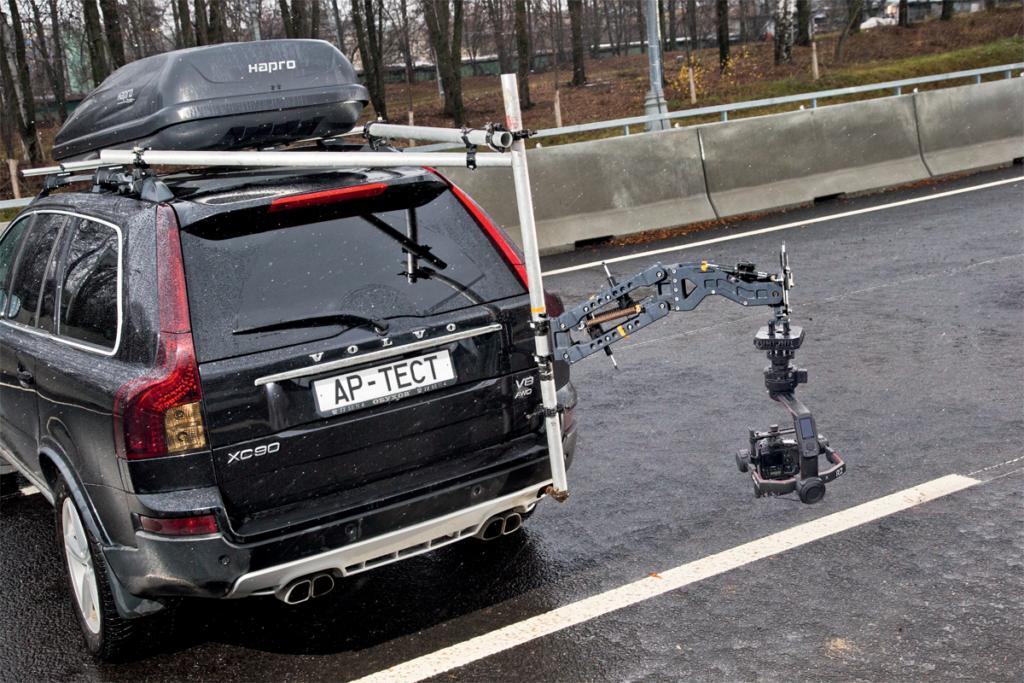
На кінці цієї «руки» встановлено стабілізатор DJI Ronin 2 — він включає гіроскопи, шарніри та сервомотори. Підвіска цього оператора має рухливість і стабілізацію по трьох осях. Це означає, що оператор може нахиляти камеру вперед і назад, нахиляти її праворуч і ліворуч і панорамувати на 360 градусів навколо вертикальної осі. Але щоб змінити перспективу — наприклад, перемістити камеру вище або далі від тіла — вам потрібно буде зупинитися та взяти гайковий ключ.
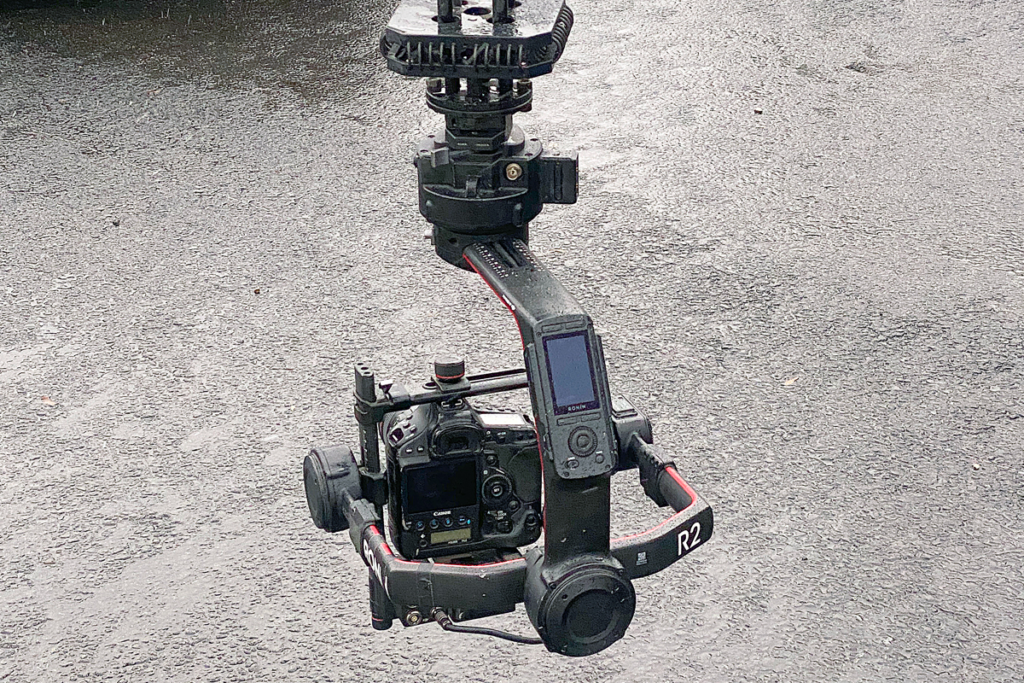
Але такий хвіст у сотні разів дешевший і в десятки разів легший за «російську руку». Серед інших переваг можна відзначити відсутність додаткового навантаження на підвіску, відсутність погіршення динаміки. Екіпажу потрібні тільки водій і оператор. Все обладнання можна зняти і залишити в гаражі. Реєструвати зміни в конструкції транспортного засобу не потрібно.
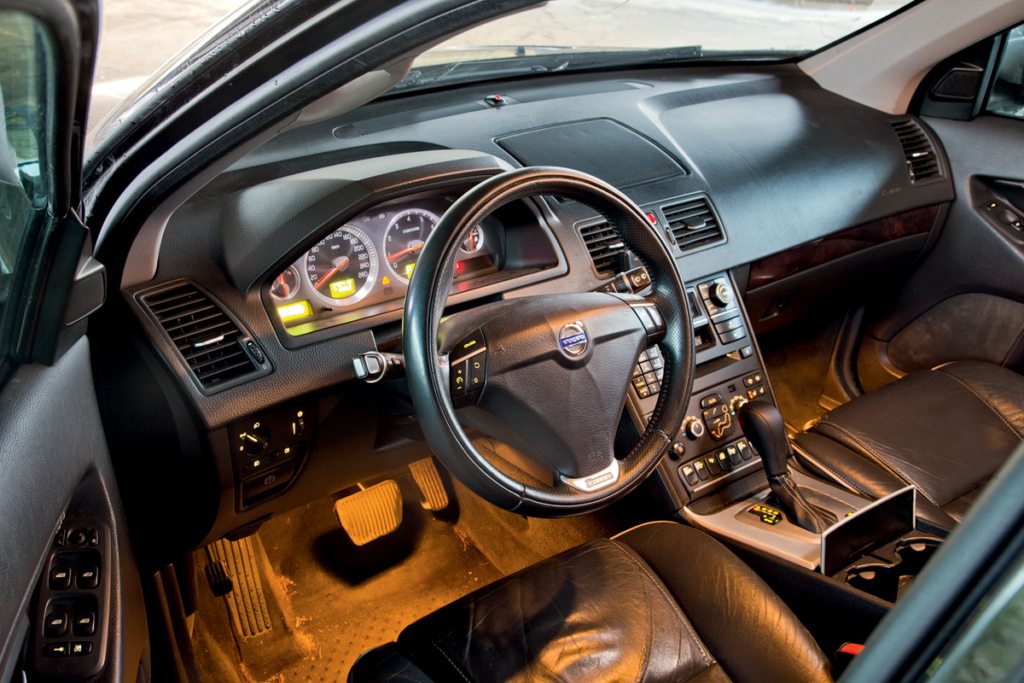
Єдиними недоліками є обмежений вибір ракурсів, заблокований доступ до багажника та менш гладке, трохи менш голлівудське зображення, оскільки пружинний пантограф і Ronin добре справляються з вібрацією, але не можуть повністю подолати власне повільне вертикальне коливання. А інакше, чому б не замінити «російську руку»?
Мені також подобалося керувати Volvo; цей автомобіль вміє зачаровувати. Він має затишний округлий дизайн і такий же округлий характер. Звички XC90 дещо нагадують яхту — мабуть, ця риса передалася від ДНК Yamaha, яка створила двигун V8.
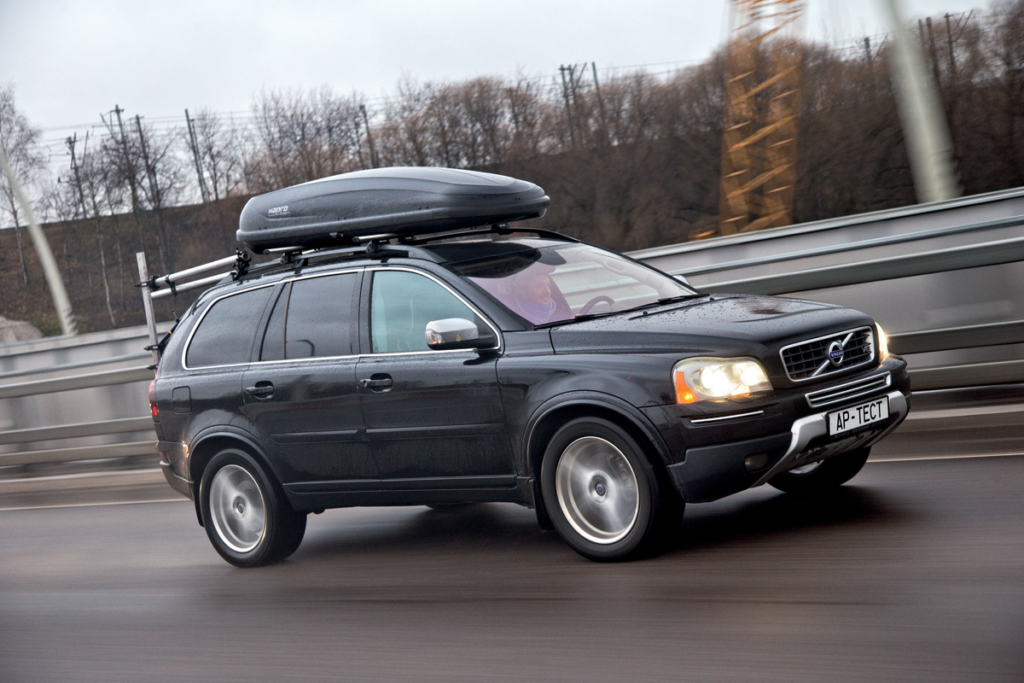
Рідкісна компоновка восьми циліндрів по всій площі та високого наддуву є відмінною рисою Volvo. З 4,4-літрового об’єму йому вдалося витягти 315 к.с., що можна порівняти з атмосферниками BMW тієї ж епохи. Але це живлення ізольовано від драйвера. Звук приглушений, відгуки на газ згладжені. За секундоміром Volvo на секунду повільніший за Mercedes (7,9 с до 100 км/год у кращій спробі), але для нього це явно не змагання в його виді спорту.
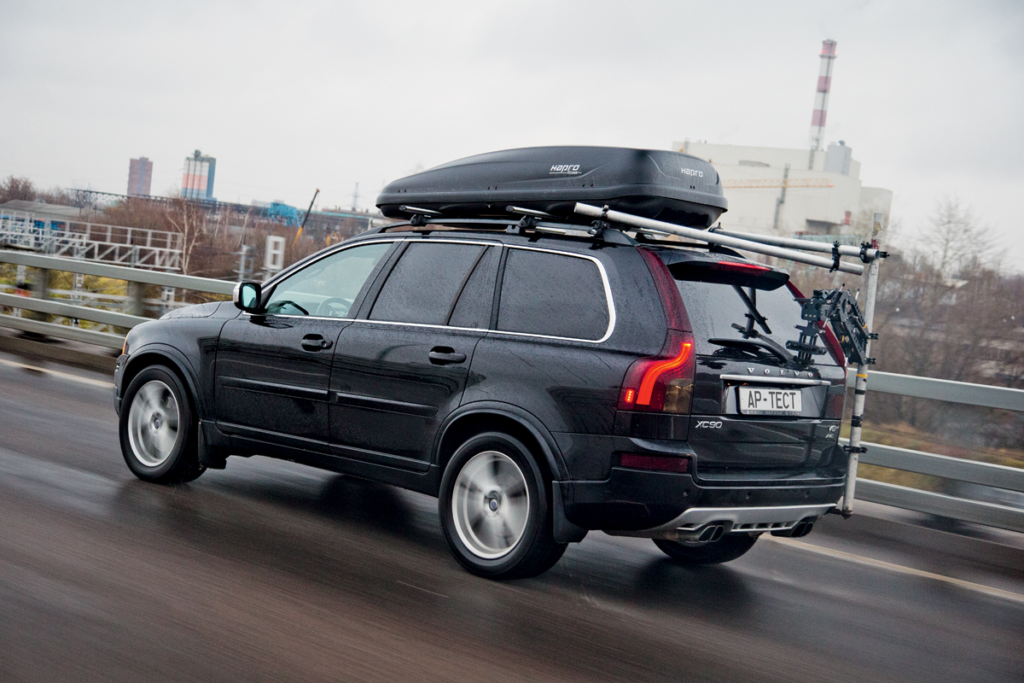
Наздоганяти знімальний автомобіль і звисати на сантиметри від його бампера для XC90 не розвага, а робота. І для водія теж. Щоб домогтися точного контролю тяги, потрібно використовувати ручний режим «автомат».
Проте підвіска тут жвава, комфортна, і, напевно, такою залишиться ще довго. Тим не менш, у XC90 V8 є маса інших особливостей, які неприємно дивують власників в плані надійності. Тому я б не ризикнув стверджувати, який із двох фільмокранів дешевше обслуговувати.
Але я точно знаю, що XC90 як автомобіль для камери з його хвостовою підвіскою успішно виконує 90% завдань для зйомки автомобільного відео на рівні, достатньому, щоб вразити середнього глядача коротким роликом. А Russian Arm необхідний при зйомках великого кіно для широкого екрана з серйозним бюджетом і потребою в складній, але ідеальній образності. Це, по суті, різниця між YouTube і Голлівудом.
Фото: wikipedia.org | Дмитро Пітерський
Це переклад. Ви можете прочитати оригінал статті тут: Моторы закадра: ездим на кинокранах Mercedes-Benz ML 63 AMG и Volvo XC90 V8

Опубліковано Жовтень 10, 2024 • 13хв на читання

